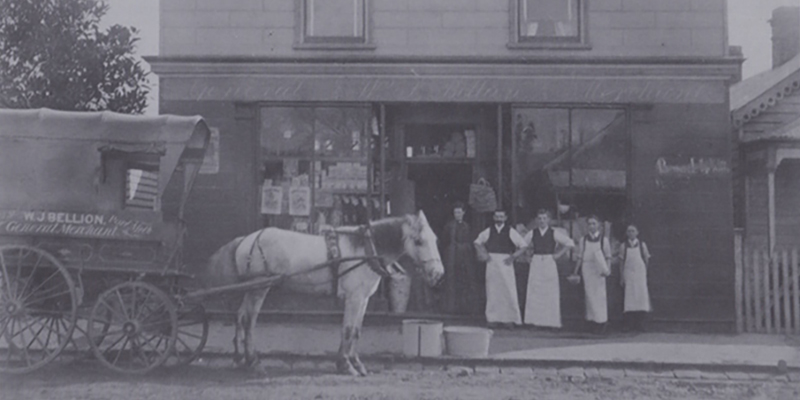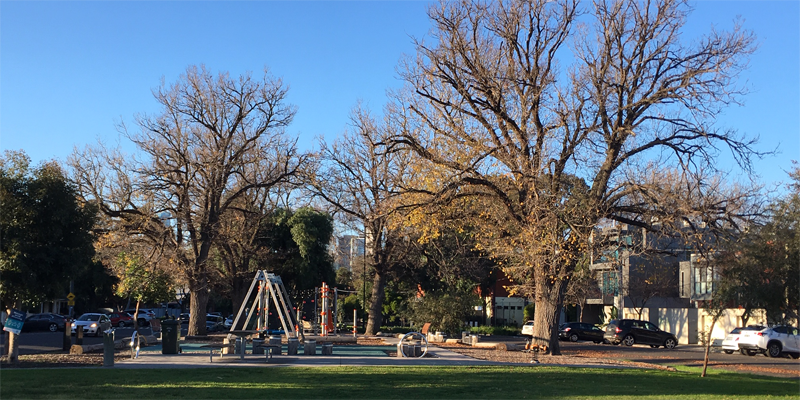Now and Then 2021 – 108 Bay Street: Bianca Apartments
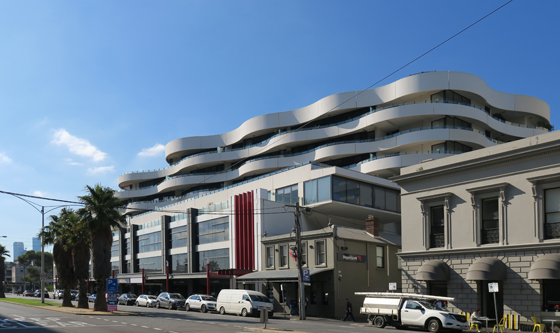
A Hotel by many Names
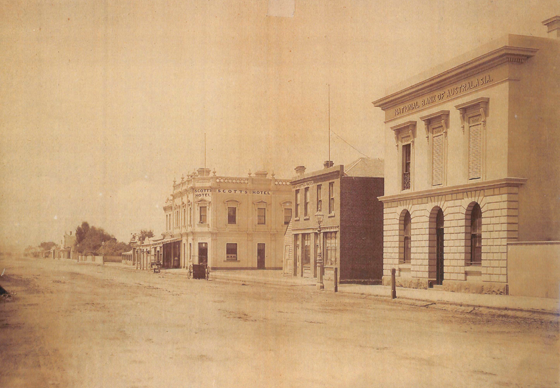
In 1854, Henry Charles Farrell opened the Sandridge Inn located on Bay Street where Bianca Apartments now stand. This early pub deteriorated and in 1871 it was described as a tumble down shanty. A year later it conveniently burned down, replaced by this imposing Victorian hotel appropriately named The Phoenix. In 1878 William Scott purchased and renamed it Scott’s Hotel. Wiliiam Scott, one-time ship’s officer, had arrived in Victoria as Soren Thygeson. He settled here and changed his name at the time of his marriage.
Within two years the name of the hotel had been changed to the Australian Eleven Hotel. It remained as a hotel under that name until it closed in 1923.
National Bank of Australasia
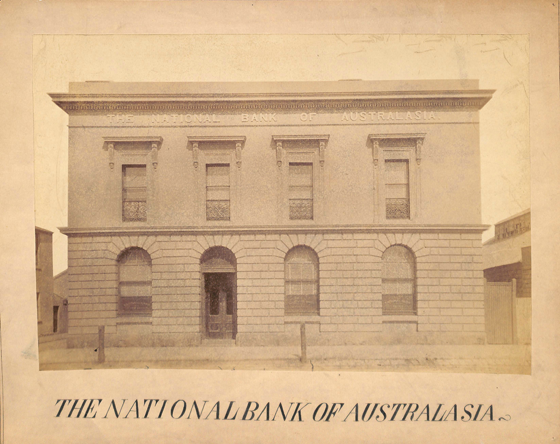
This building immediately south of Little Bay Street was the Port Melbourne branch of the National Bank of Australasia, founded in London in 1834. Note that in the time between the two Nettleton photos the bank has been extended with two sets of windows to the right of the doorway in this image as opposed to one set of windows in the wider view of Bay Street above. The former bank building retains this asymmetrical form today and operates as a cafe.
The photographer Charles Nettlleton arrived in Melbourne in 1854 and began work in the studio of Duryea and McDonald. He would carry his tent dark-room everywhere to photograph buildings and to develop the negative immediately after exposure as was essential at that time. He photographed every aspect of the growth of Victoria from then until his retirement in 1890. An extensive archive of his work is held by the State Library of Victoria.
One of the clients of the National Bank was the Borough of Port Melbourne. In the depression of the 1890s the National Bank in Port Melbourne closed its doors and none of the employees of the Council could be paid nor its bills paid.
Occupants of the site in 1902
This part of Bay Street has always had a mixture of commercial and residential use. The Sands and McDougall Directory for 1902 lists the following occupants of the properties from Graham Street to Little Bay Street:
Graham Street
132 Mrs H. Kelly, grocer
130 James Webb
120 Abraham L. Cohen, pawnbroker
118 William Roberts, tailor
116 Australian Eleven Hotel, Mrs Mary Kelly
104 Frederick Burke and Mrs Frances Burke, ladies’ nurse
102 Thyre Cliff
100 Henry James
98 Chin Kee laundry
Little Bay Street
Streetscape
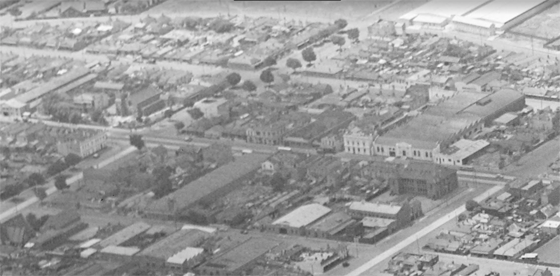
The image detail above taken from a much larger aerial photograph, shows a substantial complex just north of the Bay and Rouse Street corner. This is the printing works of Troedel and Cooper at 86 Bay Street. The advertising material designed and printed by this company and its forerunner Troedel and Company was of the highest quality. The founder Charles Troedel’s lithographic work has been the subject of a recent book: Printed in Stone, by Amanda Scardamaglia.
An aspect of Bay Street in 1878 compared with 2021 immediately reminds the viewer of the difference made by the planting of trees down the centre and the growth of a garden in the median strip. This greening of streets has changed the aesthetic and is of considerable benefit to our health.
This article is based on one of the panels that formed the Now and Then Exhibition of the Port Melbourne Historical & Preservation Society in 2021. The original panel can be seen here.
Albert and Alfred Streets | Now and Then 2021 | Lagoon Reserve

